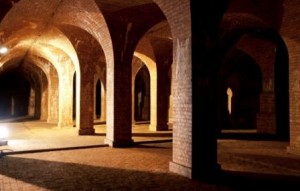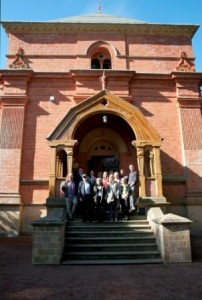October 6, 2011, by Andrew Burden
“Full steam ahead” (Papplewick Pumping Station)
Earlier this year, to mark the start of the project to catalogue the water records, representatives from the Papplewick Pumping Station Trust visited the University to find out more about our holdings. These include a series of plans of Papplewick Pumping Station which are still proving useful for engineers involved in maintaining the site today.
The Pumping Station, which started operation in 1884, is a remarkable example of Victorian architecture and engineering, and is now the only one in the Midlands to be preserved as a complete working fresh water pumping station. It ceased operation in 1969 and was finally closed in 1973 but was rescued by a charitable trust, supported by members of the Papplewick Association. After many years of restoration work, and an award in 2006 for “Best Refurbishment Project” from the Brick Development Association, the station is now open for viewing on Sunday afternoons. The next date that the beam engines are “In Steam” is the 22nd and 23rd of October (which coincides with a 1940s themed event).

Underground Reservoir
Staff from Manuscripts and Special Collections were recently invited to visit Papplewick to see the beam engines in operation. We also had the opportunity of descending into the now disused underground reservoir, constructed of beautifully made brick arch vaulting. This was a great opportunity for me to ask engineers and experts about the developments in technology for the supply of water that I had been reading about in the files of Severn Trent, The Trent River Authority and Nottingham Corporation Water Department.
The volunteers and staff of Papplewick are looking forward to returning to the University to view more items from the water archive, and to use the catalogues and online resources that we have been creating for this project, so that they can undertake further research into the Pumping Station and its history. So it’s “full steam ahead” with the cataloguing!
No comments yet, fill out a comment to be the first



Leave a Reply